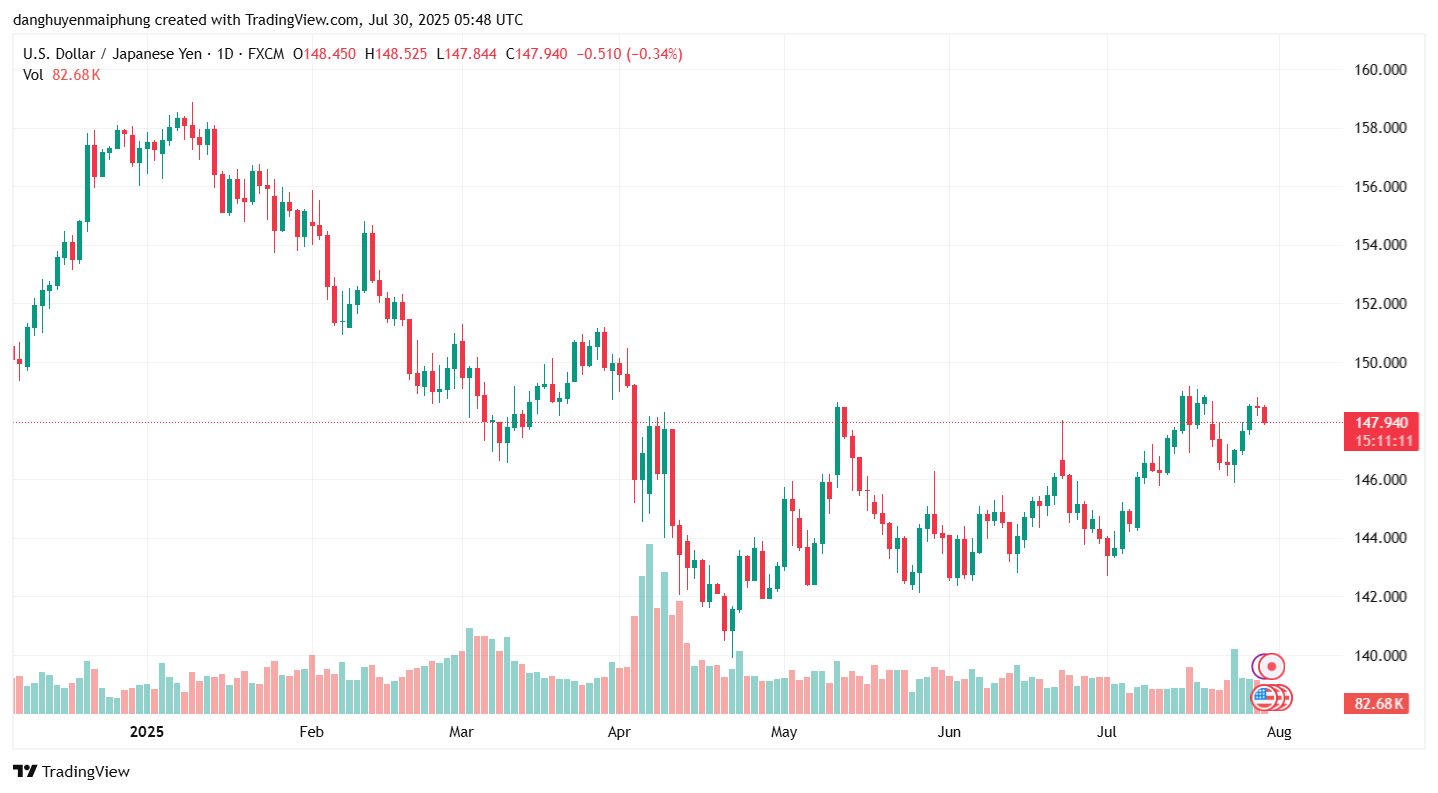Yen exchange rate today
According to Lao Dong, on July 30, the USD/JPY exchange rate decreased, falling below the 148 mark when the Japanese Yen (JPY) was supported by safe-haven demand in the context of investors being cautious before a series of important events taking place from major central banks.

The market is "holding its breath" waiting for the results of the US Federal Reserve's (Fed) policy meeting taking place in the early morning of tomorrow (Vietnam time), along with the announcement of monetary policy by the Bank of Japan (BoJ) on Thursday. Risk concerns have caused investors to shift to safe-haven assets such as the Yen, thereby putting pressure on the USD/JPY exchange rate.
Yen still faces many difficulties
According to FXStreet, the Yen's gains appear to be limited by many factors. New data shows that inflation in Tokyo in July fell more strongly than expected, weakening expectations that the BoJ will soon raise interest rates.
Along with that, the political situation in Japan is unstable after the ruling coalition of the Liberal Democratic Party (LDP) and Komeito lost in the recent Senate election. These factors make it likely that the BoJ will continue to maintain a loose monetary policy in the short term.
On the other hand, the US dollar still has a supporting foundation from expectations that the Fed will keep interest rates high (4.25 4.50%) in the coming time, despite increased political pressure demanding monetary easing.
Investors are waiting for Chairman Jerome Powell's speech after the meeting to find more clues about the possibility of interest rate cuts in the future.
In addition, some new data released from the US showed a mixed trend: the number of unemployed jobs (JOLTS) in June decreased to 7.43 million - lower than the forecast, showing that the labor market is stagnant.
However, the US consumer confidence index increased to 97.2 points in July, showing high consumer optimism and spending ability factors that can help maintain economic growth.
This week, investors will continue to closely monitor a series of important economic data from the US, including second quarter GDP growth, PCE consumer price index and non-farm payrolls (NFP) report, to assess the outlook for monetary policy and the impact on the USD/JPY exchange rate in the coming time.











